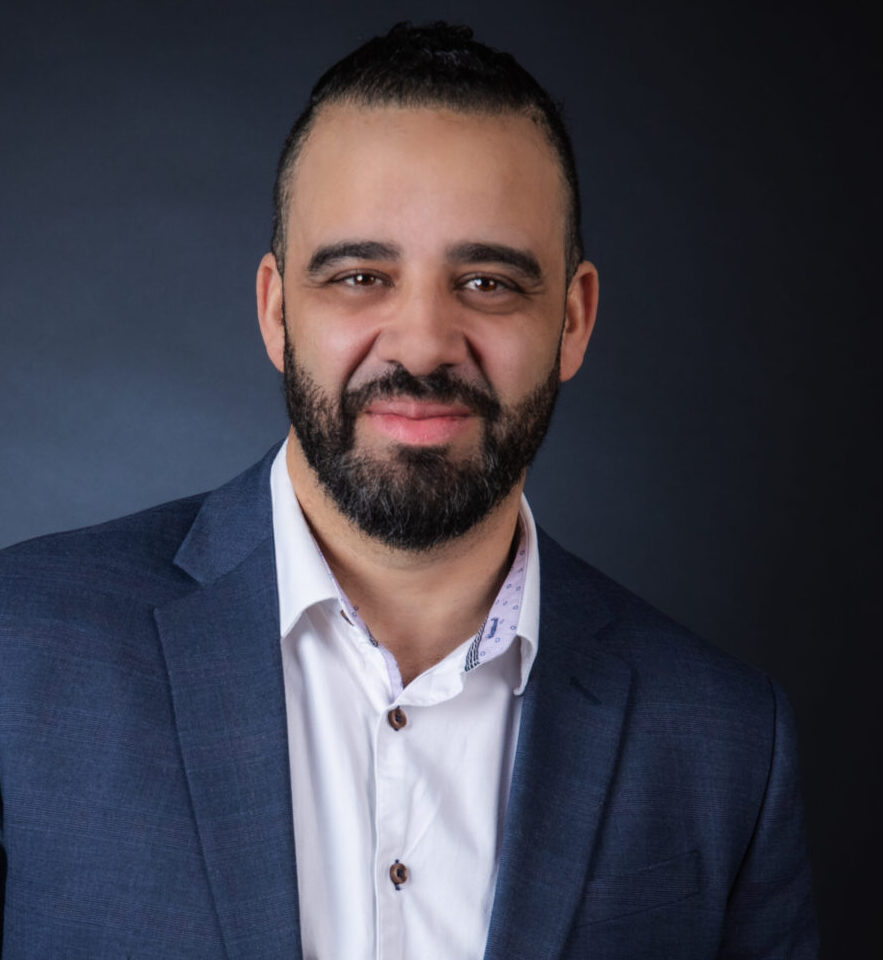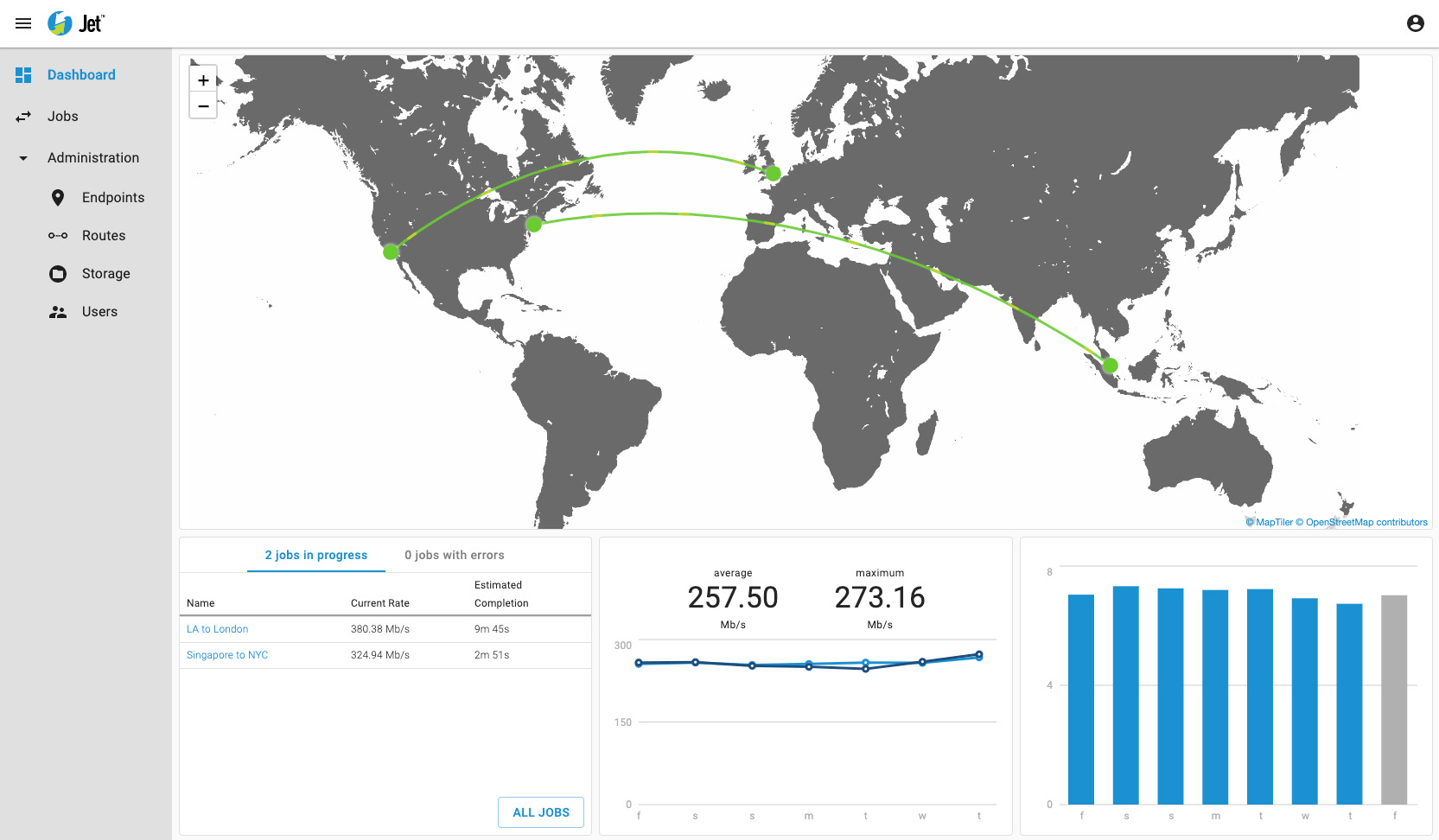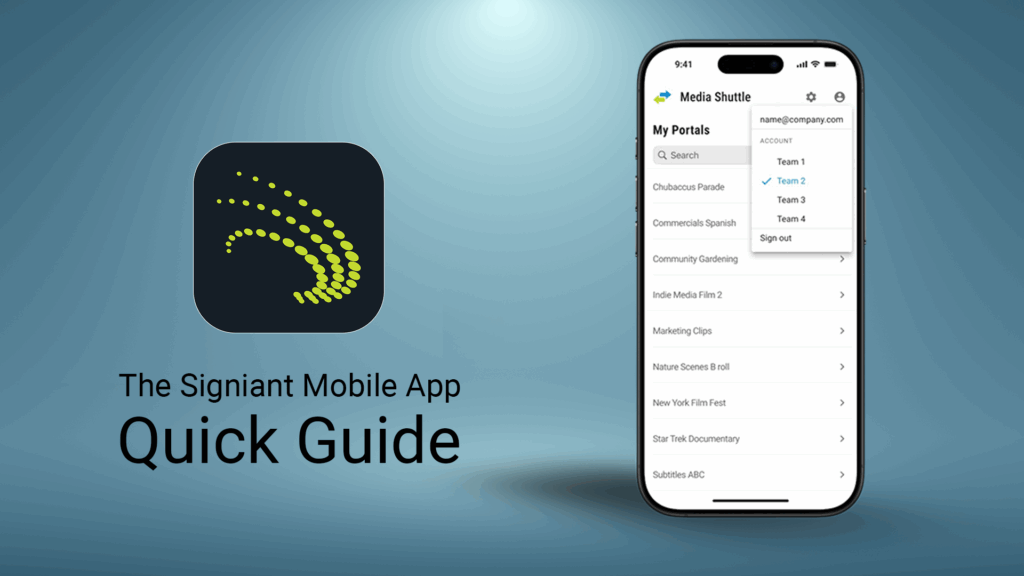At Your Service: Realizing the Full Value of Cloud-Native SaaS
The advent of cloud technology has greatly expanded the conversation around what media companies expect from their technology stack, including rethinking build vs. buy decisions. It’s now possible to build almost anything in-house, and, as such, there’s usually someone in the organization who advocates doing so.
While there are certainly situations when developing your own solution can make sense, there are also many reasons to seek help from outsiders. And although finding the right trusted advisor can be a challenge in itself, the benefits can certainly be worth the effort.
Media organizations often underestimate the complete costs of supporting a homegrown solution when making a build vs. buy decision. As a result, they fail to properly value off-the-shelf SaaS solutions in their decision process.
With any leading SaaS (Software as a Service) solution, the Software is not just delivered to you via the cloud; you’re also getting media first-responder Service teams. These teams monitor the software 24×7, offer onboarding and support, and take action immediately if there’s any interruption to service. They are also responsible for providing routine updates to the software and ensuring the software is secure — and the costs are shared across a large customer base so you benefit from economies of scale. Rather than burdening the customer, the best SaaS solutions take on the responsibility of consistently and constantly providing a great product, and building long-term relationships with the businesses that rely on them. This is what often gives SaaS the advantage.
However, not all vendors are fully invested in the relationship with their customers or their service responsibilities. Some may outsource components or have in-house customer service and SRE teams who are not integrated with product development, creating major disconnects and inefficiencies. These disconnects prove especially damaging for teams working remotely or navigating disruptions such as those caused during the 2020-2021 pandemic. In short, because of the dynamism of modern media, problems on a vendor’s end are magnified on the customer end. The results are often ugly.
Signiant introduced the first true cloud-native SaaS solution into the media supply chain back in 2012 with the launch of Media Shuttle. Since then, we’ve continued to innovate, introducing two additional SaaS products, Flight and Jet, all built on the same SaaS platform and with the same cloud-native approach. Signiant is especially committed to a high services standard, delivered through three teams that work alongside Signiant product development and our customers: Customer Success, Customer Support, and SRE.
Best Practices in Customer Success
With advanced B2B software like Signiant provides, onboarding new users is led by our Customer Success team. Since SaaS solutions do not require the extensive IT preparation traditional software does, it’s easy for SaaS vendors to be completely hands-off and miss the opportunity to understand new customers’ unique business use cases and educate them on how the product can be tailored to address their needs.
At Signiant, every new customer is assigned a Customer Success manager to ensure the product is utilized in the most efficient way for their business. Hence the reason why Customer Success managers like Signiant’s Alexandra Rioux are so vital.
Understanding Each Customer’s Use Case

“We want to make sure new customers see real value from the beginning, which means we need to understand their business, whether it’s big or small, and their unique applications,” says Alexandra.
Signiant’s Customer Success team guides customers to see the potential value our products bring. Typically, customers start with a small number of users. Not only does their general usage grow, but they see expansions to other departments, with more and more teams getting excited about the collaborative potential they see their colleagues benefiting from.
Customer Success managers are essential to this, not only helping customers achieve that immediate value, but also to understand the new opportunities as the product rolls out across their business. While a customer might have purchased a subscription to Media Shuttle with a very specific or limited use case in mind, very often they’ll organically discover new ways they want to leverage the solution, and their customer success manager is always there to support them in getting those new workflows up and running.
It’s important that SaaS products make this discovery easy and comfortable for the customer. Because we’ve designed all of our products to be as dynamic as the needs of our customers, we encourage our customers to explore the ways that a Signiant solution can creatively evolve alongside their mission.
When onboarding new customers, Customer Success works side by side with the support team to make sure everything is deployed and working in the customer’s environment.
Best Practices in Customer Support

Customer Support is the group tying all our product teams together, a key service in any software company. Led by Jad Abdul-Rahim, Signiant’s vice president of technical support and professional services, Customer Support has evolved considerably since Signiant released its first SaaS product in 2012.
Traditionally, support teams are siloed away from most of the company or even outsourced. They are, after all, the ones who deal with customer issues, and some business leaders don’t want them influencing company culture too much.
That is a missed opportunity and a failure to understand the real value and insight these teams provide. Signiant’s transition to SaaS revealed the power of Customer Support, not only for our customers, but for our products, and our culture. In short, the influence that many other companies shun is exactly what Signiant embraces, helping us to continue to design and update our products and our perspective based on what we hear from our industry.
The biggest objective testament to this is the support team’s consistency in achieving an over-90 Net Promoter Score yearly – meaning over 90% of people who interact with Signiant support would recommend it to others.
Being objective about your own customer service is difficult to achieve. Just because a vendor thinks they’re offering satisfactory service does not mean the customer feels the same. This can lead to a breakdown in communication and trust.
“Ownership, responsiveness, and, most importantly, positive attitude is why we can maintain a high Net Promoter Score,” says Jad. “We always welcome our customers’ feedback. We appreciate and learn from all kinds of feedback – whether it’s positive or negative.”
Jad Abdul-Rahim
The positive attitude and genuine investment that define our support team have been at the core of Signiant throughout its twenty-year history. This focus on transparency and close communication with our customers is one of the founding Signiant SaaS principles.
The 6 Pillars of Signiant Customer Support
Our overall approach can roughly be categorized into six steps that create a positive feedback cycle, starting with Customer Support calls and tickets.
1. Customer Support Calls and Tickets
More customers and regular releases mean a higher volume of support tickets and calls. The support team takes several steps initially to streamline their response time and ensure every customer’s technical issue is addressed:
- Launched an all-in-one online Customer Support tool on support.signiant.com where customers open tickets, review articles, watch training videos, and generally self-serve general support needs. The support site is easily found in the header of signiant.com.
- Improved internal systems ensuring efficiency in call routing and handling.
- Implemented a 24×5 tiered support model to handle all customer calls and tickets efficiently.
“As somebody who works in engineering, I pride myself on providing the best quality of service to my end users,” explains a Signiant customer. “I can see that Signiant has vested a lot of time and training into their support. And it’s really appreciated from somebody that has worked in the industry for so long, to be able to pick up the phone and get a human being. That’s the level of partnership that we need. And that’s what keeps our industry moving forward.”
2. Solving Problems as a Team
A big factor in the support team’s success is effective internal collaboration, sharing, and supporting each other when needed. Everyone on the team learns from each issue and expertise is shared across the team. Fostered by an open office concept, the team hears all of their coworkers’ conversations with customers.
“Building a positive team culture can be challenging when the day-to-day team role is to address problems. However, it is much easier when team members understand that collaborating on issues results in delivering a high standard of support,” says Jad. “With leaders of 20 years’ experience on the support team, a culture of team collaboration and knowledge sharing has fostered development, encouragement, and growth, leading to an overall better customer experience.”
This internal partnership was demonstrated recently when Signiant experienced an issue on a holiday weekend, an event that could waylay an inattentive SaaS solution vendor. Guided by Signiant’s SaaS customer-centric principles, Jad and the rest of the Customer Support team sprung into action first thing on Saturday morning when notified.
Not only were they able to fix the underlying problem, but they spoke with customers throughout the following week, ensuring that any effects — no matter how slight — were dealt with thoroughly. It’s this level of commitment that defines both Signiant’s Customer Support and engineering teams. They understand that incidents will never totally disappear, but that constantly working alongside customers to address challenges ensures that it’s easier to prevent such incidents, and to swiftly remedy them when they do occur.
“Jad and the rest of the Customer Support team leapt into action and worked throughout the week to provide technical assistance and to communicate with customers,” Signiant CEO Margaret Craig said. “Meanwhile the development team also had a critical part to play; it was necessary to quickly build and test a new version of the Signiant App. It took a lot of hard work and cooperation across the board, and I’m really proud of how the company pulled together.”
3. Collaborating with Engineering
Signiant’s open-office concept supports effective collaboration with the engineering team as well. “We ensure there are no barriers or complex internal processes for cross-departmental collaboration and escalations. Exceptional customer experience is an organizational goal within Signiant and requires contribution from multiple teams,” explains Jad. “We promote open communication to provide rapid releases and changes within our SaaS products. This positive team environment extends to customers.”
The support team not only reports technical issues customers encounter, but also provides feedback based on pattern tracking to the product team. “We track patterns within issues that customers report and provide the information to product management, so engineering is aware of any areas for improvement.”
“We love to learn about how our customers use Signiant products, and enjoy making our support personal rather than simply solving tickets,” says Jad. “Our goal is to deliver a world-class customer experience with every customer contact.”
4. Voice-of-Customer Data
VOC data is one of the best ways to understand the real value of your customer service. Using it to calculate an annual Net Promoter Score helps companies track improvement over time. Signiant generates an annual Net Promoter Score for Customer Support by asking one simple question to every customer that submits a ticket and calculating a score for the year.
“On a scale of 0-10, how satisfied were you with the resolution we provided today?” The results are categorized:
- Promoters (9-10): Customers highly satisfied with your product or service and rave about you.
- Passives (7-8): Customers content with being a customer of your business, but don’t love you.
- Detractors (0-6): Customers not happy with your product or service and have had a negative experience.
A company’s Net Promoter Score is the percentage of “promoters” among the total survey results. The survey gives the support team another opportunity to interact with customers and fix any issues.
“We take detractor responses seriously and review each one as a team. We follow up with the customer to understand what we could have done better,” says Jad. “And, even though it doesn’t change the score for that year, it ensures we learn from the feedback and continuously improve our customer experience.”
5. Redefining Goals and Actions
This leads to a retrospective period for revisiting goals and making sure the team is aligned. From reviewing the support team’s basic Service Level Agreement (SLA) to improving the support site and ticket response process, Jad and the team are committed to redefining goals based on customer feedback and aligning their practices with them.
6. Confidence and Transparency
With those steps in place, the result is a boost in confidence across all teams. A funny thing happens when you learn to take feedback and are transparent about areas that still need improvement; you get to see how useful your products really are.
“We understand we may not be able to make everyone happy all the time, and it’s true people mostly call us only when they have issues,” says Jad. “But we also get to see firsthand how mission critical our products are for so many people. It’s very motivating to be part of their success story.”
While many issues uncovered by Customer Support go directly to the product development team, some specific problems that require more troubleshooting go to SRE and their array of monitors, logs, and other tools that keep everything up and running.
Best Practices in SRE
Site Reliability Engineering (SRE) brings together the two crucial elements of software engineering: development and operations. The SRE methodology combines the entire software development, deployment, and monitoring lifecycle and ensures 24×7 availability for customers. Ideally, SRE is a cross-functional practice where developers are actively involved in releasing and monitoring the software they write. Today, with cloud computing, there’s very little difference between the infrastructure and the code running on it.
“It used to be that developers would write code; testers would test the code; and operations would deploy and monitor the code. Things have changed such that developers and testers are much more involved in every aspect of the process, including the deployment and monitoring of code they’ve written,” explains Kevin Haggerty, Signiant SRE manager. “With the infrastructure and code tightly coupled, developers understand their service best since they designed and wrote it. So, it’s way more efficient to get them involved early in any problem solving when an issue is discovered.”
Automatic Product Updates and Continuous Monitoring
The benefits of SRE practices to customers can be simplified into two categories: product updates and monitoring. Signiant’s SaaS customers automatically receive product updates, with no downtime or maintenance windows needed. That customer benefit comes from a finely tuned system developed by our SRE team.
“We have a fairly elaborate system that supports developer productivity and rapid release cycles. It also allows us to release new updates and roll them back quickly if there’s a problem,” says Kevin.
SRE takes responsibility for everything properly working for customers at all times — which translates into monitoring a large number of automated processes. Signiant’s SRE team built up operational excellence over several years as we transitioned to SaaS.
“We have hundreds of advanced checks running 24×7 telling us all the different ways things could be inoperative,” says Kevin. “In addition, we leverage machine learning and anomaly detection to quickly highlight anything that looks out of the ordinary in our complex system. Whether it’s Amazon, Azure, Google Cloud, or any of our own stuff, if something goes wrong, we can usually fix it before it impacts customers, and a lot of it is automated.”
“If Amazon is having a problem in Virginia, for instance, our system will automatically failover to another region. We’ve invested heavily in a multiregion system, which is a lot of work but is incredibly important for our customers.”

While much of SRE is automated, a member from Signiant’s SRE team is on call at all hours, and they get alerted if there is a problem anywhere in the system.
Security
Signiant is responsible for customer data and takes security very seriously. We adhere to the MPAA best practices and guidelines for content security and have completed the Trusted Partner Network’s (TPN) App and Cloud Gold Shield Assessments for its SaaS products, as well as being SOC 2 compliant.
SRE is a core aspect of Signiant’s defense-in-depth security practices and has software packages, audit tools, and scanning tools to ensure we are as secure as we possibly can be.
We run a commercial network security intrusion tool and do ongoing scans to ensure there aren’t misconfigurations or other known vulnerabilities we need to be aware of. We also monitor for extraneous error conditions on our customer portals. For example, in the past, on occasion, we have seen a large number of suspicious errors from a specific customer’s Media Shuttle portal. After investigating the incident, we found that it was the customer themselves who were doing a security scan, but we treat all suspicious activity the same just to make sure.
Dynamic SaaS for a Dynamic World
The 2020-2021 pandemic disruptions and reimagined workflows were unlike any other for the M&E industry and the world as a whole. For most, this illuminated gaps in media organizations’ alternative workflows and capabilities. Signiant continues to find ways to fill the gaps and support the new ways of working to help sustain businesses emerging from disruption.
As companies continue the transition to remote working, Signiant recognizes increased user engagement with our products and people. It is the malleability, the flexibility, and the resilience of SaaS that that migration made the aforementioned transition manageable and in talking with our customers, Signiant becomes better and better at supporting them. In many ways, it underscores what it means to form a productive SaaS relationship between client and vendor that can weather the tumult and the transformation endemic to M&E.
SaaS is not just about a product or technology; it’s a different way of thinking about and delivering software and builds much stronger long-term relationships between buyers and vendors. When SaaS vendors don’t engage with their customers, the customers themselves end up losing opportunities and productivity. However, when vendors stay aligned with those using their solutions, SaaS is a powerful tool for a media organization to have at their disposal.
Now more than ever, that’s the experience M&E companies should be comfortable expecting.
SaaS is a Relationship – Choose Your Partners Wisely
The bottom line — buying processes need to evolve to better align with the cloud era. Make sure that upfront evaluation effort is proportional to investment, and think of your vendors as partners whose goals are aligned with yours. Partnering with a SaaS provider can be one of the best choices a business can make. But both customers and vendors must understand the demands and realities of the partnership that SaaS entails. Customers should make sure their vendor is as reliable as their product. Customer support is essential to getting the most out of SaaS.
Additionally, security and transparency are essential. As a SaaS product evolves via updates, you should be able to trust you’ll get all the necessary information about what changes affect you. To ensure that all of these needs are met, customers need to do their research and question their vendors. You want a solution you can rely on even when things get chaotic. Make sure the people who will be serving you are people you want that SaaS relationship with.
At Signiant, we base our entire approach to our solutions around the principles of communication with our customers: building features and tools according to what we’ve heard works and where our customers have asked us to improve. This dynamic relationship ensures that Signiant SaaS is structured around the customer’s needs, serving them at every turn.
The right SaaS product can transform your business. But it’s the relationship you have with the vendor that will make that possible.
SaaS solutions are a valuable investment that can prove transformative if properly deployed. To learn more about how Signiant has revolutionized SaaS in M&E, explore The Signiant Advantage: 10 Reasons Why the Media and Entertainment Industry Chooses Signiant


